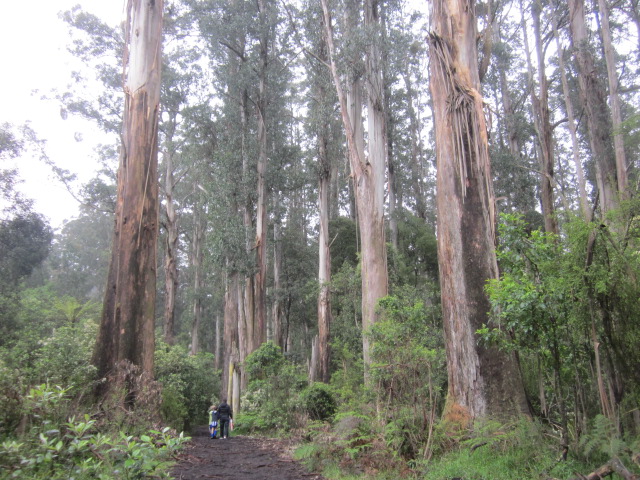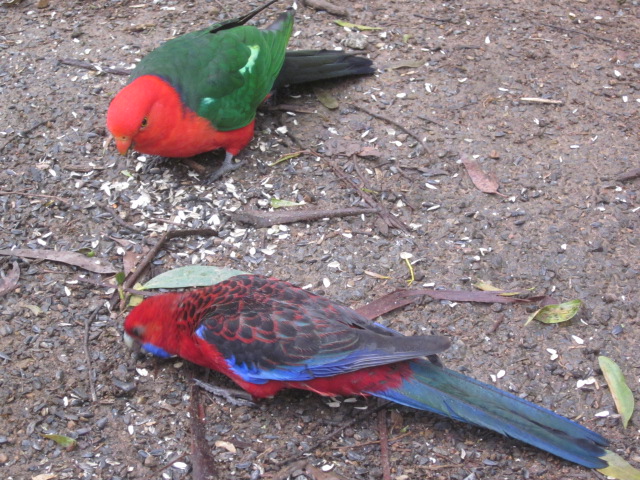Dandenong Ranges National Park (Sherbrooke)


In 1987 Sherbrooke Forest, Doongalla Reserve and Ferntree Gully National Park were combined to form Dandenong Ranges National Park. Covering 3215 hectares, the park plays an important role in protecting a population of famous lyrebirds and other fauna, as well as protecting the forests and fern gullies of the Ranges. Since June 1997 Olinda State Forest and the Mt Evelyn Forest have also been included in Dandenong Ranges National Park.
Things to Do
- Scenic drives through the Ranges are just as popular now as they have been for many years.
- Enjoy a picnic at the Fern Tree Gully Picnic Ground or at One Tree Hill or in Sherbrooke Forest.
- Near the park are coffee shops and restaurants, bed and breakfasts, craft shops, antique shops, gardens and the historic Puffing Billy train from Belgrave to Gembrook.
- Numerous walking tracks are excellent for short family strolls or longer hikes.
Facilities
Electric/gas barbecues are available in the Fern Tree Gully Picnic Ground, and in Grants, Sherbrooke, O'Donohue and One Tree Hill picnic grounds. Picnic areas have tables, water and toilets. Many also have gas or electric barbecues.
Sky High Mt Dandenong Observatory and Maze
Grants Picnic Ground and Tearoom
Heritage
Originally used by the Bunurong and Woewurrong Aboriginal tribes, the Ranges became an important source of timber for early Melbourne and much of the forest was cleared. Farming became established late last century as roads and railways were built. The 'Puffing Billy' narrow-gauge line from Ferntree Gully to Gembrook was opened in 1900.
The area became popular with tourists from the 1870s onwards; Fern Tree Gully was first reserved as a park in 1882 and other areas followed. The present national park was established in 1987.
Some of the heritage of the Dandenongs is depicted in paintings by famous artists such as Sir Arthur Streeton. Reproductions of their works can be found on signs in the park and around the Ranges.
Fauna
The park is rich in wildlife with 130 native bird species, 31 native mammals, 21 reptiles and nine amphibian species recorded.

The Superb Lyrebird is its most famous inhabitant. People the world over are fascinated by the ability of this bird to mimic the calls of other bird species, and by the dancing display and beautiful tail of the male. Sulphur-crested Cockatoos, Crimson Rosellas, Laughing Kookaburras, Eastern Yellow Robins, Yellow-faced Honeyeaters and Pied Currawongs are some of the native birds most frequently seen in the park.
Heavily-scarred eucalypt trees are evidence of the night-time feeding of Yellow-bellied Gliders, and tiny Feather-tail Gliders make their homes in the hollows of mature trees. Tree Goannas can also be found in the park.
Vegetation
The plant communities in the park are remnants of the original vegetation that has receded over the last 150 years with the rapid growth of Melbourne's suburbs.
Dandenong Ranges National Park has six major vegetation communities in which about 400 indigenous plant species occur. The park is particularly well known for its spectacular Mountain Ash forests and fern gullies.
Other vegetation communities include Cool Temperate Rainforest, Box Stringybark Woodland, Riparian Forest, Mountain Grey Gum -Messmate Forest and Sclerophyll Woodland. The park supports significant plants such as the Slender Tree-fern and Summer Spider Orchid. Fire plays an important role in the ecology of the vegetation and is an on-going issue for residents of the Ranges.
Opening Hours:
The park is a day visit area and camping is not permitted. However, there are many bed and breakfasts in and around the Dandenongs that are popular for short weekend breaks.
Occasionally, picnic areas within the park may be closed due to dangerous weather conditions, high fire risk or for major works. If your window of opportunity to visit is limited please call 13 1963 on the day of your planned visit to confirm it is open.
Cost:
Free
How to Get There
The 40 kilometre drive from Melbourne via Burwood Highway or Canterbury Road is approximately 1 hour. Alternatively, take the train to Upper Ferntree Gully or Belgrave station.
Location
Monbulk Rd, Sherbrooke 3789 View Map
✆ 13 1963
Web Links
→ Dandenong Ranges National Park (Parks Victoria)
→ Dandenong Ranges National Park Visitor Guide (PDF)
→ The Best Family Activities in the Dandenong Ranges
→ Dandenong Ranges National Park - Visitor Guide - South (PDF)
→ Dandenong Ranges National Park Map Ferntree Gully Area (PDF)
→ Dandenong Ranges National Park Map Olinda Area (PDF)
→ Dandenong Ranges National Park Map Sherbrooke Area (PDF)
→ Dandenong Ranges National Park Horse Riding (PDF)
→ Dandenong Ranges National Park Cycling (PDF)
→ Dandenong Ranges National Park Picnic Grounds (PDF)








